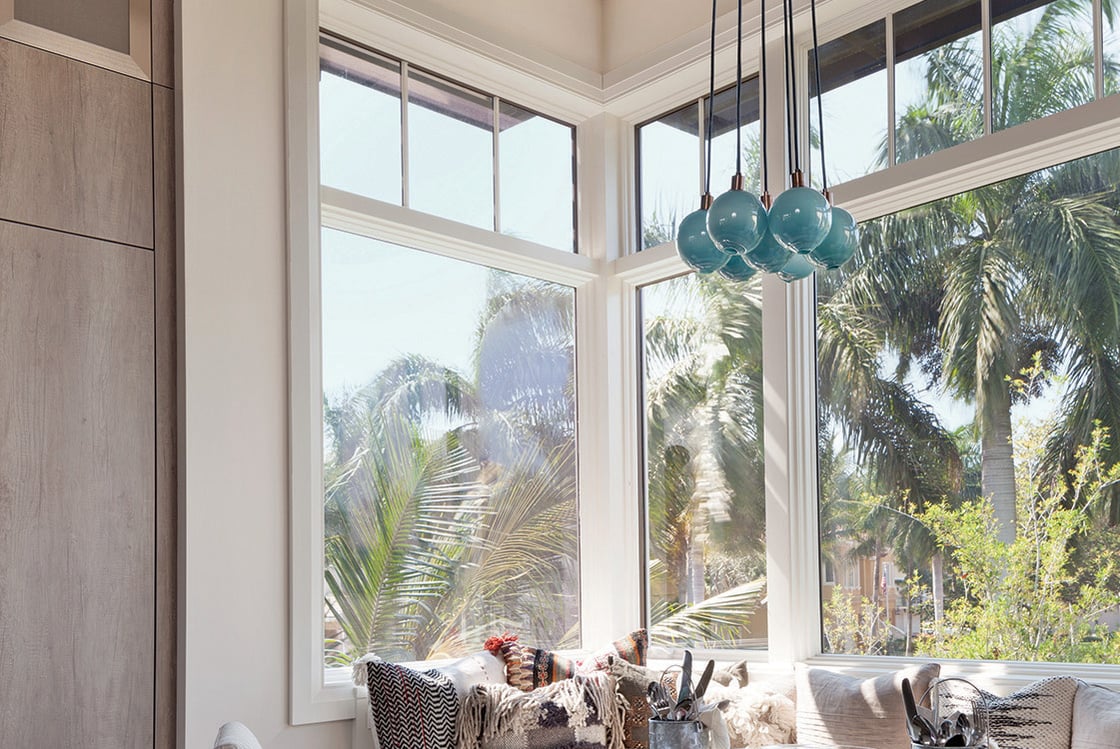On the HPM Blog, our goal is to be your guide through the entire home building process.
You’ll find remodeling tips, design inspiration, advice on working with pros, DIY projects and more!
Hurricane Preparedness Building
The Benefits of Installing Hurricane-Resistant Windows and Doors
With hurricane-resistant windows and doors, you no longer have to sacrifice safety for curb appeal. From workplaces to homes and everything in between, tenants want to be able to enjoy all the natural beauty the Islands have to offer.
However, we all know how susceptible the Islands are to heavy rains, strong winds, and even the occasional hurricane. With hurricane windows and doors, you and your tenants can have it all — safety, security, a great view and access to the outside!
What are hurricane windows and doors?
From front doors to back doors, sliding glass doors, and every window big and small, one of the best ways to protect your building, without compromising a building’s design, is by investing in hurricane windows and doors. High-quality hurricane windows and doors are made from stronger materials than standard windows and doors and include multi-layer glass, reinforced frames, and heavy-duty hinges, making them better able to withstand high winds and flying debris.
Impact vs wind-resistant
Impact-resistant and wind-resistant are the two types of hurricane windows and doors you’ll come across. Both are capable of protecting buildings against storms, but there are some key differences.
Wind-resistant means it is designed to withstand high wind pressures. Compared to standard alternatives, these windows and doors are reinforced with stronger frames and thicker glass, which provides them with more strength and stability during a storm.
Impact-resistant is a step up from that. These windows and doors are designed to withstand the impact of debris. Typically they consist of multiple-layered glass, with a durable interlayer. The interlayer is designed to hold the glass together, even if it is shattered by debris.
Deciding on which is right for your project will depend on a variety of factors including your location, your area’s specific hurricane risks and building codes, and your budget. You can find a variety of both impact and wind-resistant windows and doors at HPM Building.
Stay current with building codes
While hurricane windows and doors are beneficial to anyone looking to keep their properties safe, it is legally required for some by code.
While specific building code requirements may vary slightly from county to county, state building codes require that any new construction or building going through major renovations or upgrades, located in areas rated for 130 mph winds or higher, have a plan in place to mitigate the possible debris from hazardous weather such as hurricanes. One way of meeting this requirement is to install hurricane windows and doors on all exterior openings.
Code requirements can also be met by covering all openings with plywood. But that means keeping plywood, cut to size, on hand and would require someone on-site to install the plywood in the event of a storm.
Building a safe room is another option to meet code requirements, but that could require major plan redesigns and incur significant additional costs.

|
Hurricane-resistant windows are able to withstand high winds and still offer great views of the outdoors. |
Additional benefits
Another additional benefit of choosing hurricane windows and doors is their ability to prevent break-ins. Reinforced frames and thicker glass make it much harder for intruders to gain entry, giving you and your tenants added security.
And that thicker glass? Hurricane windows and doors can make a building more energy efficient, helping to cut AC costs and greatly reduce outside noise.
Best of all, hurricane windows and doors can help give you and your tenants peace of mind, especially for buildings or homes that may not be inhabited year-round. With hurricane windows and doors, you can rest easy knowing your property is safe even in the case of the unexpected.
Installation and maintenance
For the most part, installing a hurricane window or door follows the same process as standard doors and windows, but with some slight adjustments. For example, hurricane window and door frames require larger two-by-six-es instead of the usual two-by-fours to secure the window properly.
When it comes to maintenance, these doors and windows are nearly maintenance-free. You can care for and clean them the way you would their standard counterpart.
Partner with a professional
It’s important to partner with a reputable contractor that can help you choose the right products to meet your area’s building codes and give you peace of mind. Choose a company that is also available to support your building and renovation projects and provide helpful guidance on quality products and best practices.
As featured in Building Management Hawaii
|
Ian Wilson is the Window, Door & Millwork Program Manager at HPM Building Supply with a specialized background in door and window sales
Ian Wilson
|
Keep updated with the Latest News, Products, Deals and More!
© 2018 HPM BUILDING SUPPLY. ALL RIGHTS RESERVED
Receive the latest in HPM news, products, exclusive deals and more!
> Sign me up!©2023 HPM BUILDING SUPPLY | HOME PLANS, MATERIALS ALL RIGHTS RESERVED.

Copyright © 2022 HPM Building Supply. All Rights Reserved.